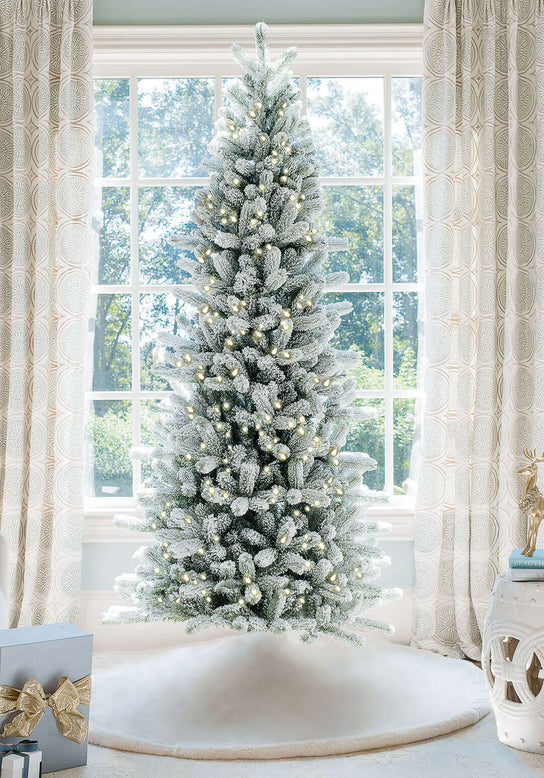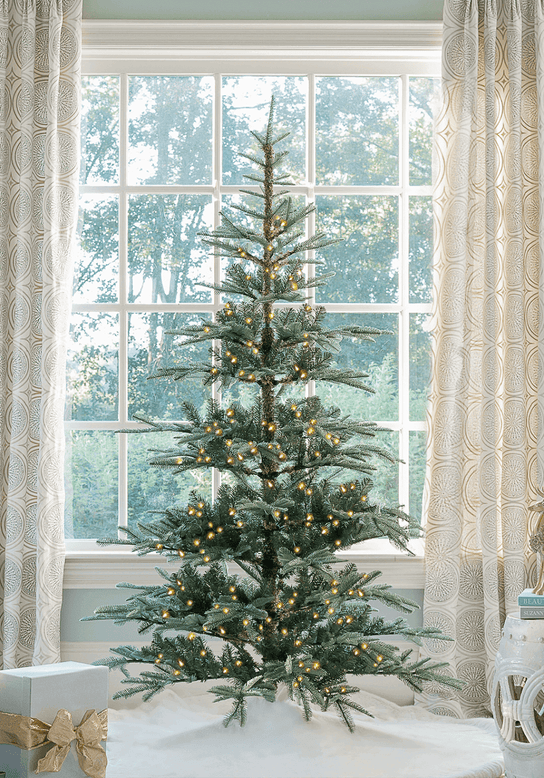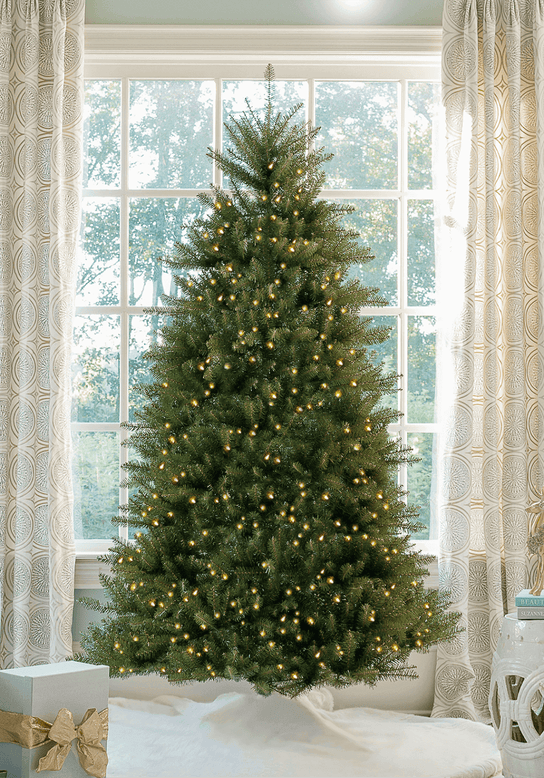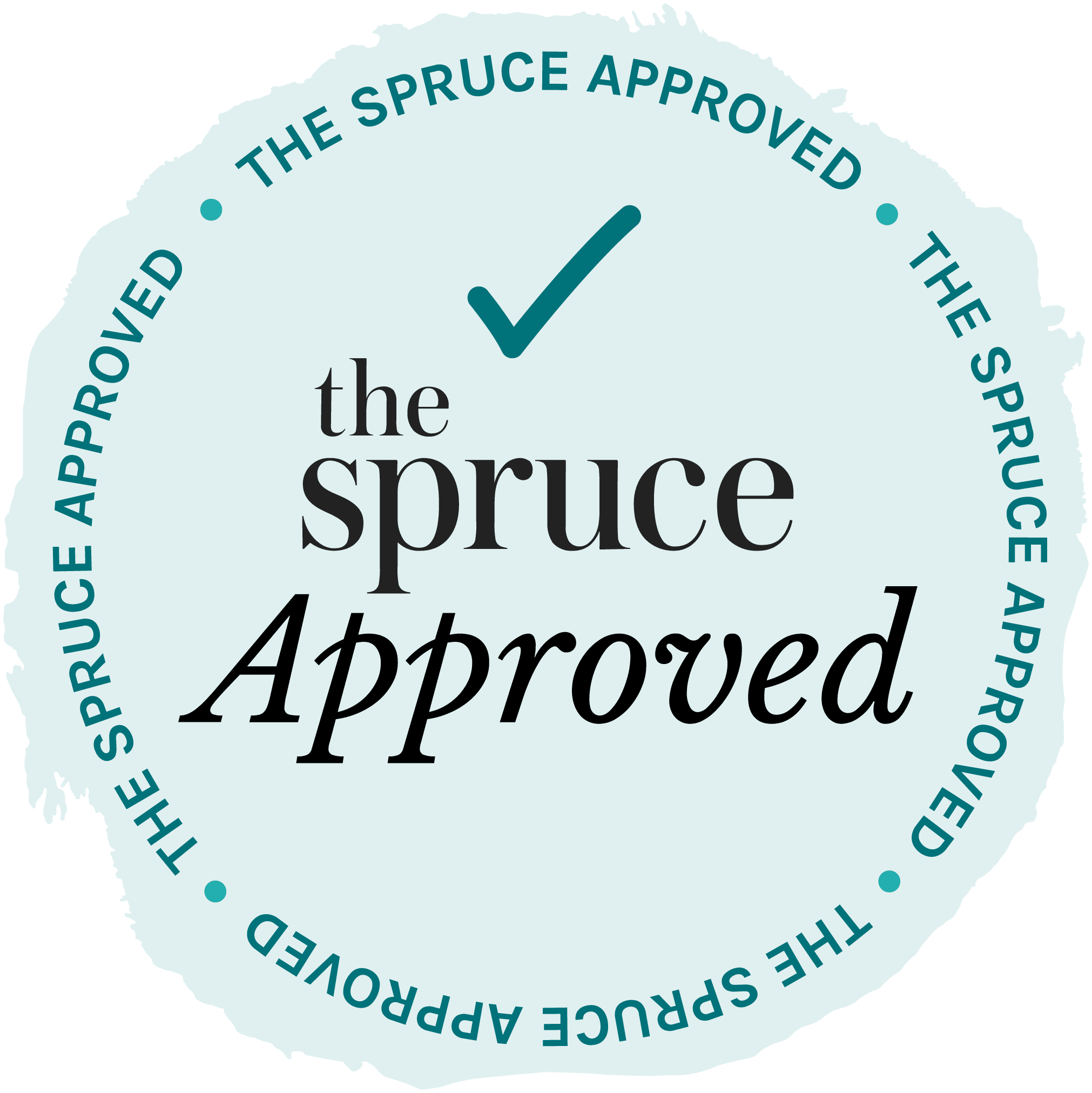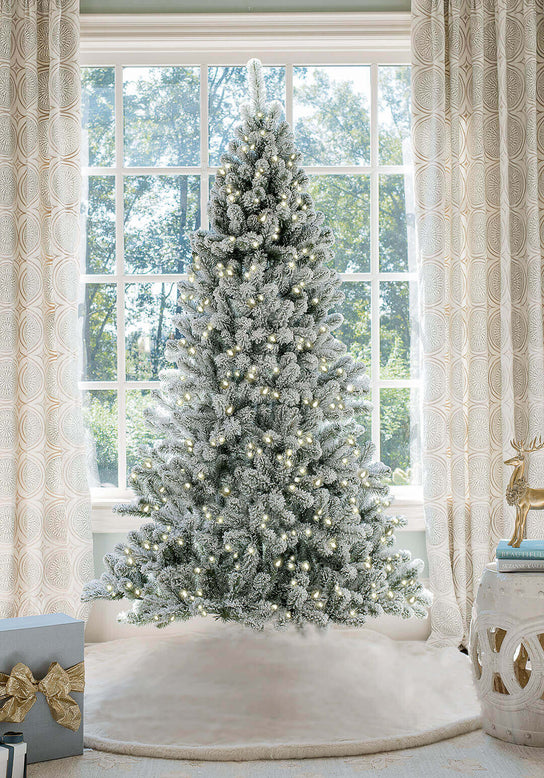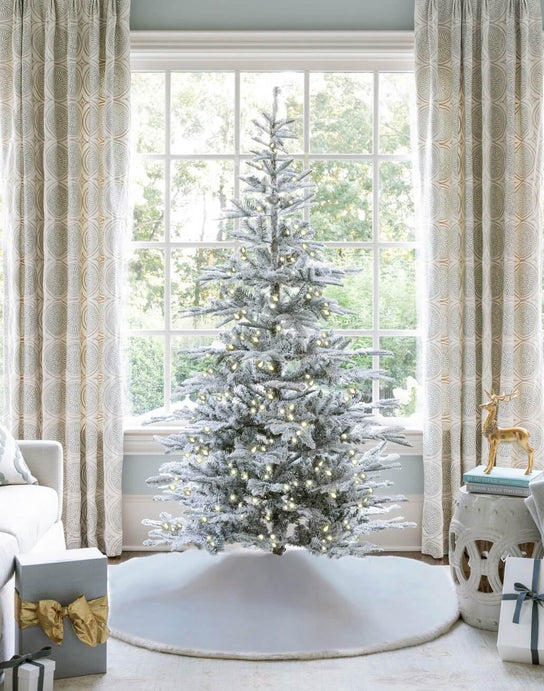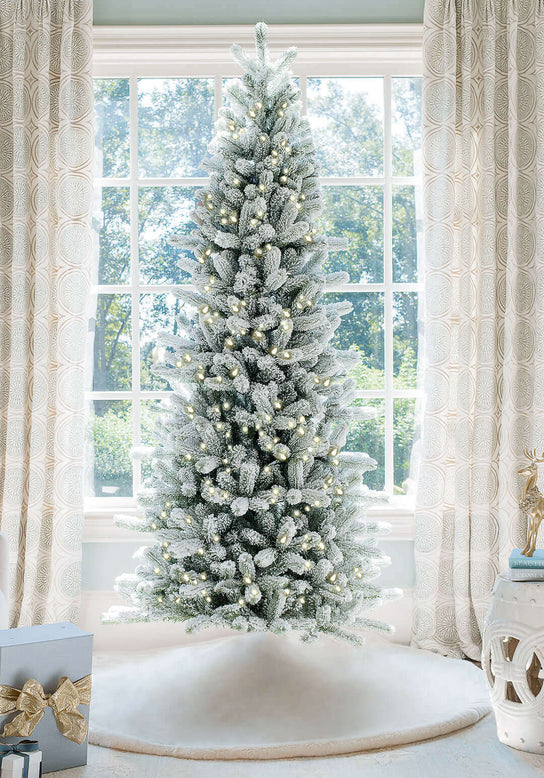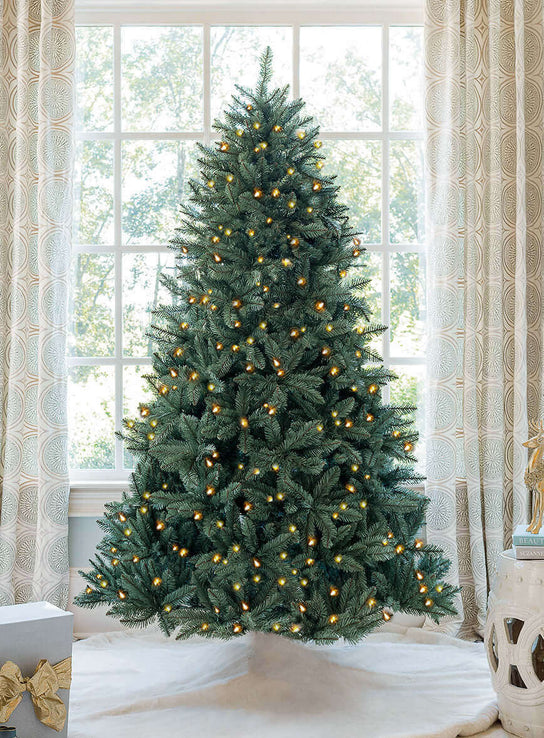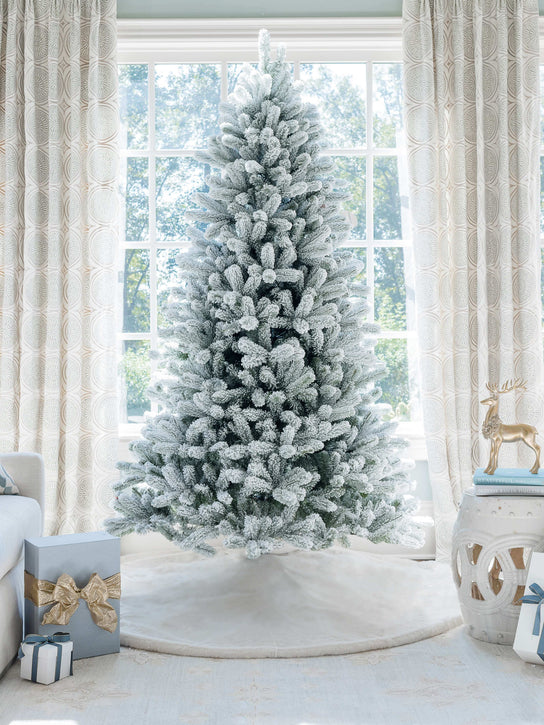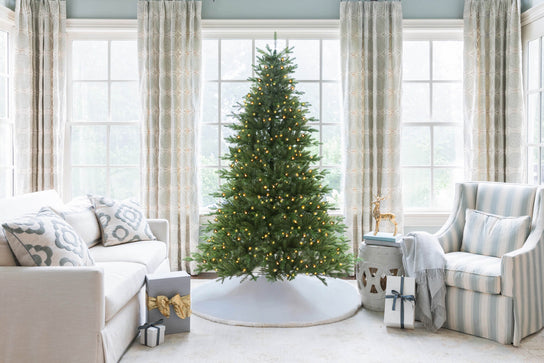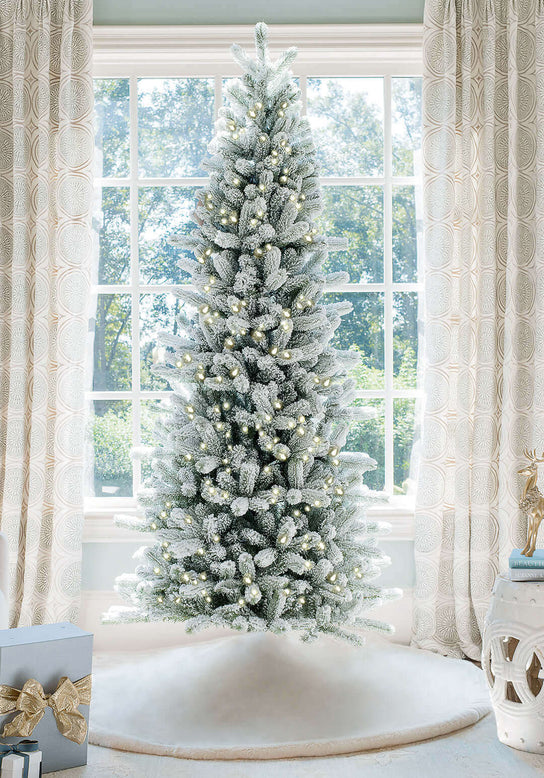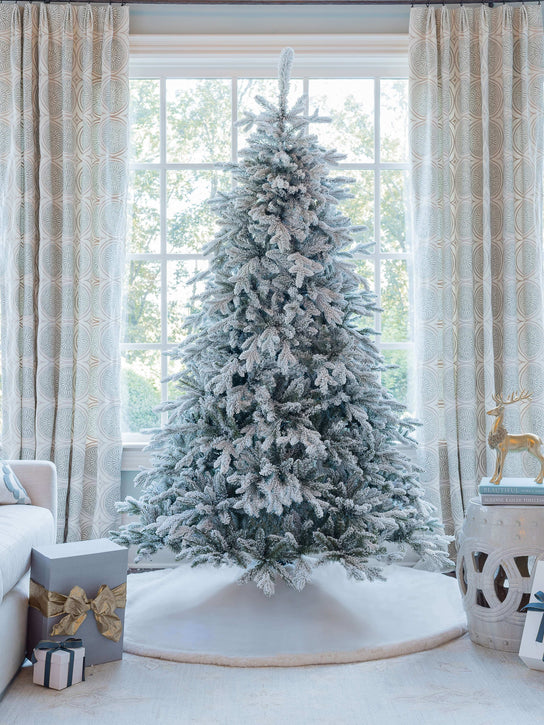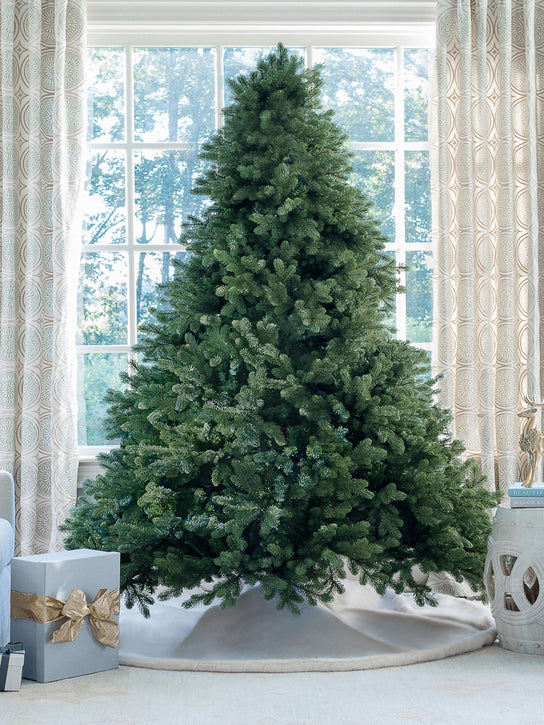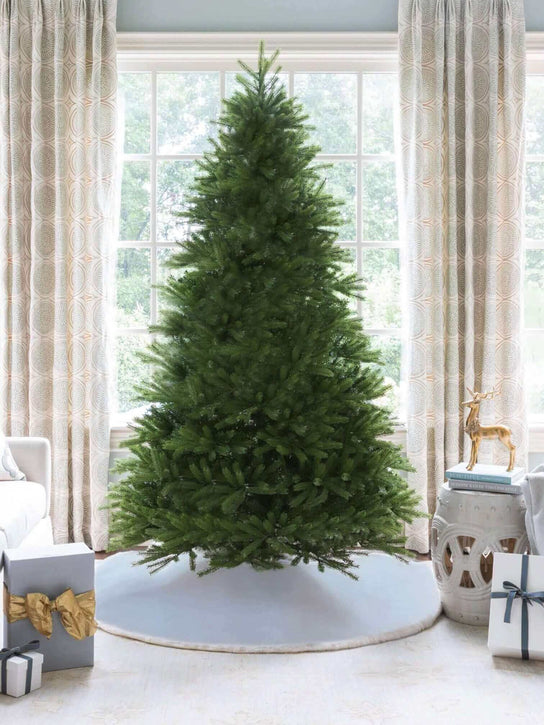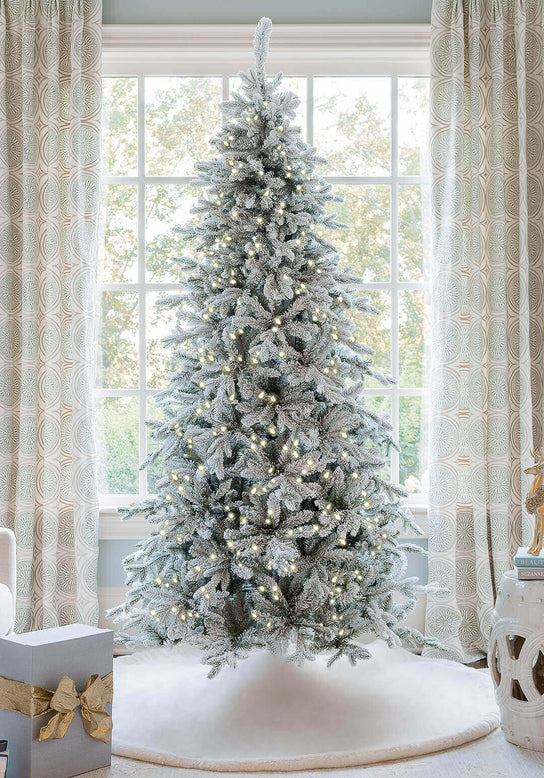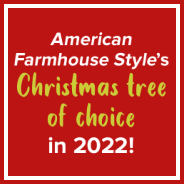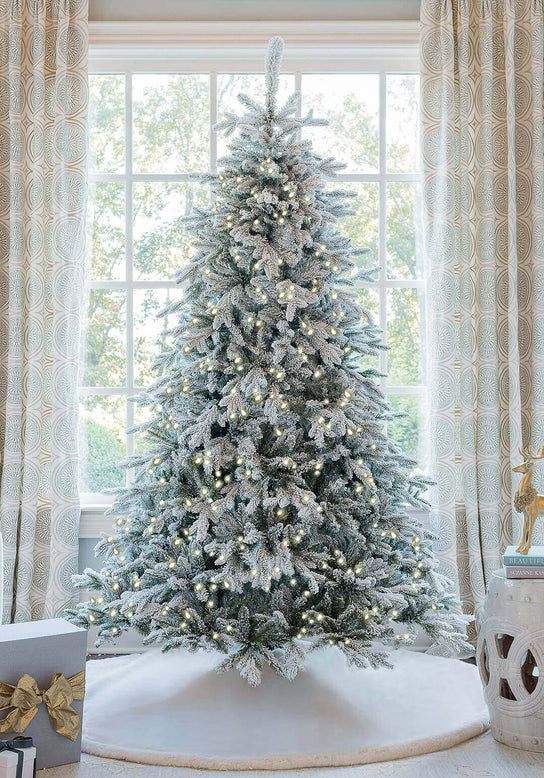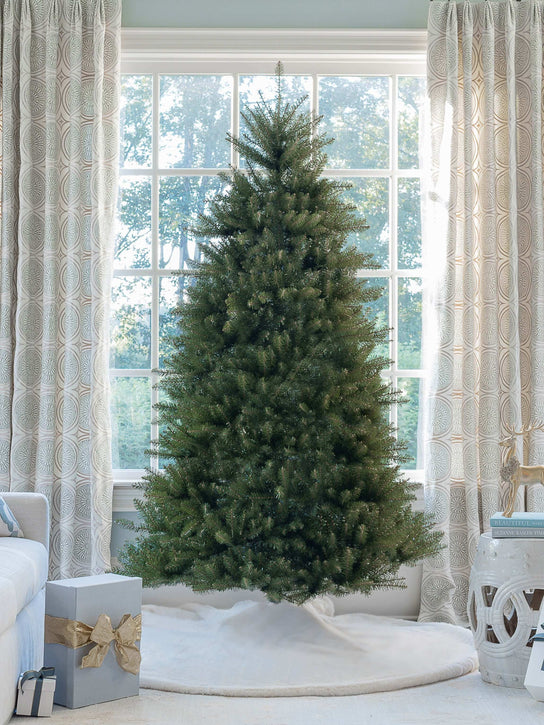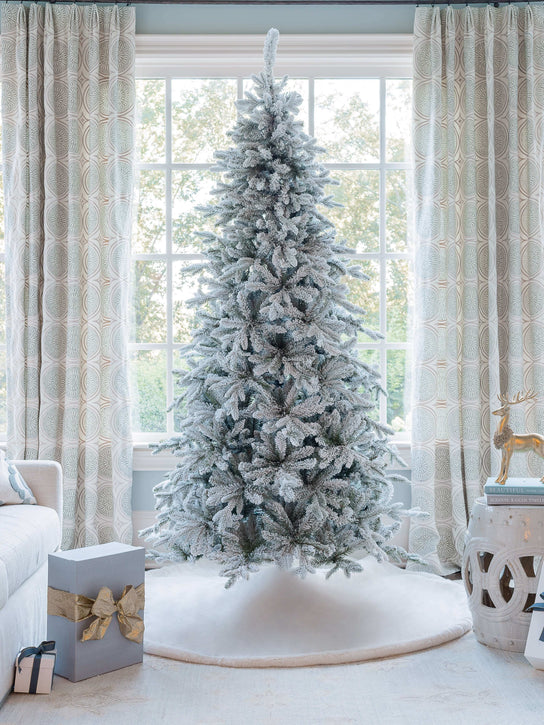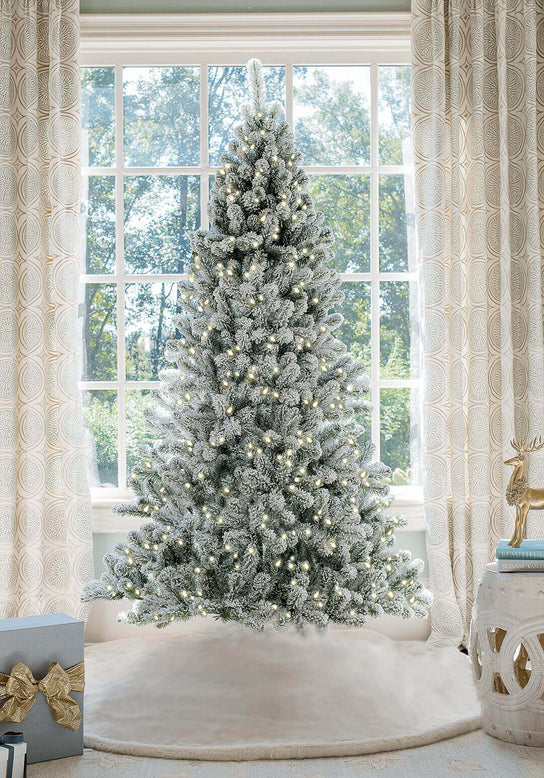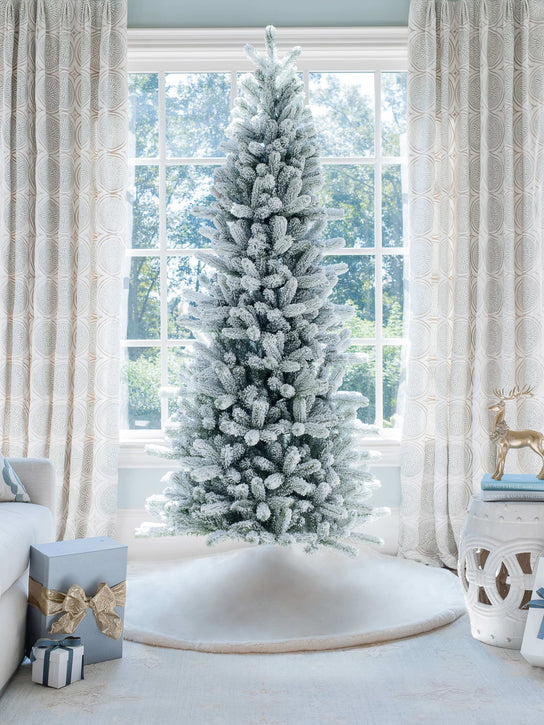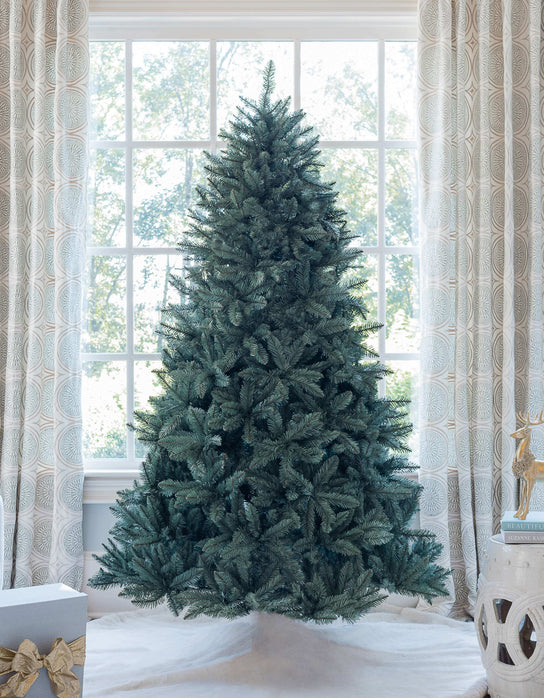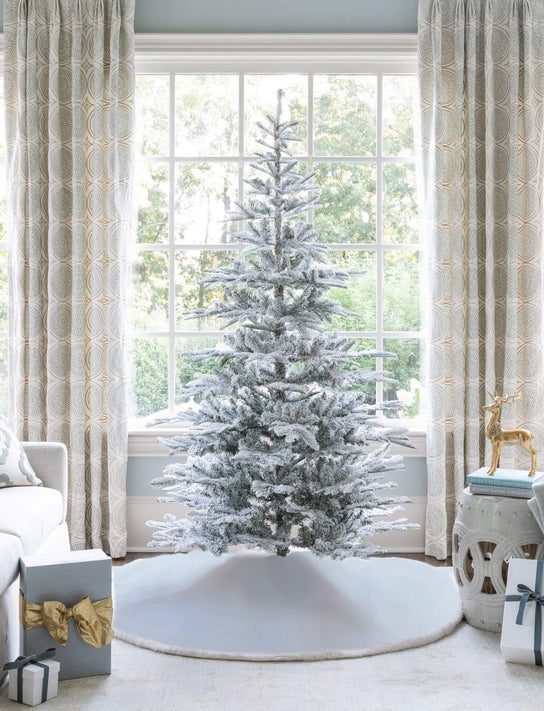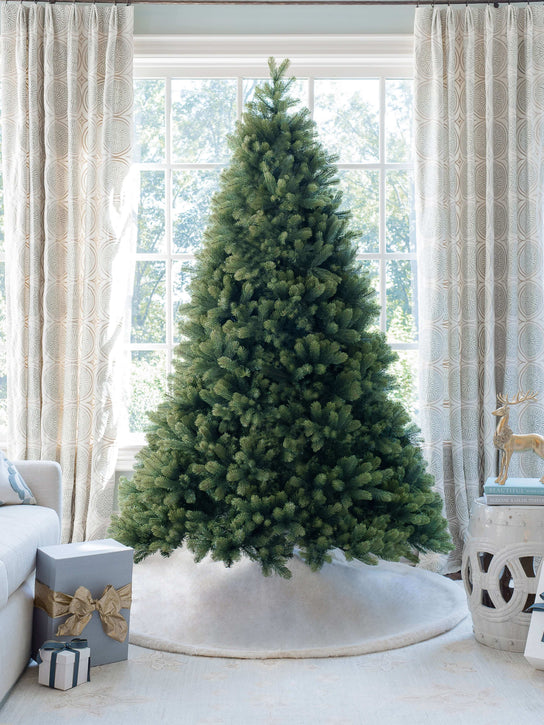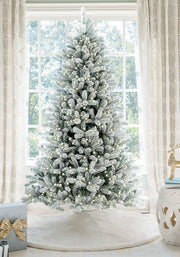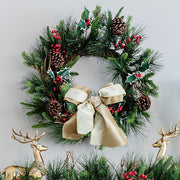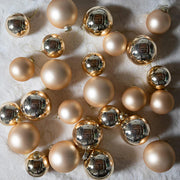With so many artificial Christmas tree options available, it’s hard to know where to start when you’re looking for a tree that combines quality, durability, and aesthetic appeal. Let’s discuss the elements you should consider when you’re ready to buy an artificial Christmas tree.
Tree Size and Height
Choosing the right size and height for your artificial Christmas tree is an important aspect to think about to create balance and harmony in your home over the holidays. One of the first things to think about is space availability, basically, where you plan to place the tree. Before making a purchase, measure both the height and width of the area so you can be sure the tree will fit comfortably in this space, and will complement the room’s layout.
- Space Availability: Start by measuring the area where you want to set up the tree. This includes both the floor space and the vertical space, as ceiling height plays a significant role in determining the appropriate tree size. For example, if you have a low ceiling, a tall, full tree might overwhelm the space or even make it feel cramped. Conversely, in rooms with high ceilings, a larger tree can create a grand effect.
- Rule of Thumb: A good rule of thumb is to leave at least 1’6” of space between the top of the tree and the ceiling. This gap gives your plenty of room for a tree topper. Without this clearance, you might find that your chosen topper doesn’t fit or that the tree looks squished, which can detract from its overall appearance.
- Height Considerations: The height of the tree should be proportionate to the room size. Most ceilings run between 8’ and 9’. So, a tree height of 7’6” to 8’ works well, allowing for a balanced look without overwhelming the space. Rooms with exceptionally high ceilings can consider trees that are over 8’ tall.
- Width and Shape: Slim or narrow trees are ideal for smaller spaces where floor space is limited. Full or wider trees are well suited for larger areas where they can be displayed in all their glory.
Tree Shape
- Full Trees: Full trees have a dense and robust profile, and they mimic the traditional look of a natural evergreen. They are ideal for larger spaces where their ample branches can accommodate a range of decorations and create a classic, lush holiday look. Their substantial presence is perfect for rooms where they can be a central focal point.
- Slim Trees: Slim trees have a narrower profile, which makes them an excellent choice for smaller spaces or areas with limited floor space. They fit comfortably against walls or in tight corners, and work well in modern interiors where space efficiency is a priority.
- Pencil Trees: Pencil trees are even narrower than slim trees, resembling a pencil’s thin and elongated shape. If you have a very tight space, a pencil tree is for you.
Tree Type
- Flocked Trees: Flocked trees have a coating of white, snow-like substance that mimics the appearance of fresh snow. Flock trees have the feel and look of just being cut and brought in from a wintry day.
- Green Trees: Traditional green trees are the most versatile and classic option, resembling the natural color of evergreen trees. Green trees are ideal if you prefer a more conventional appearance or want to showcase colorful ornaments and lights that stand out against a classic backdrop.
Material & Realism
- PVC (Polyvinyl Chloride) Branches: PVC branches are a common choice for artificial Christmas trees, primarily because of their affordability. PVC trees are made from a type of plastic that is cut into flat, needle-like pieces and attached to the tree frame. This material is generally less expensive than its counterparts, making it a popular option for budget-conscious shoppers. They tend to look less life-like than their PE counterparts.
- PE (Polyethylene) Branches: PE branches represent a higher-end option for artificial Christmas trees and offer a more realistic and natural look. Unlike PVC, PE branches are molded from a plastic material that mimics the texture and appearance of real pine needles. This material is usually used in higher-quality trees, giving the tree a more lifelike visual and tactile experience.
Pre-Lit vs. Unlit Trees
- Pre-Lit Trees: Pre-lit Christmas trees come with built-in lights already attached to the branches, and offer a huge advantage in terms of convenience. The primary benefit of a pre-lit tree is the time you save during setup. Instead of spending hours untangling and arranging strands of lights, you simply set up the tree, plug it in, and enjoy it. At King of Christmas, we offer warm white and multicolor options.
- Unlit Trees: Unlit Christmas trees offer flexibility to the customer to customize the tree with their own choice of lights. This option is great for people who enjoy a hands-on approach to decorating and want to create a unique lighting scheme that perfectly matches their holiday vision. With an unlit tree, you have the freedom to choose from a wide array of lighting styles, colors, and functions, such as LED or incandescent bulbs, to achieve the exact look you desire.
Additional Features
- Pre-Decorated Options: Pre-decorated Christmas trees are designed to simplify the decorating process by coming with built-in embellishments such as pine cones, flocking or berries. These pre-attached decorations save time and effort, as the tree arrives ready to display.
- Remote Control and Timer: A remote control lets you operate your tree’s lighting system without the need to manually adjust the lights. This feature can be useful for turning the lights on and off, adjusting brightness levels or switching between different lighting modes from the comfort of your couch. With a timer, you can set your tree’s lights to automatically turn on and off at designated times. This can help save energy and extend the life of your lights. You can program the tree to light up in the evening and turn off at bedtime, so your tree is always beautifully illuminated when you want it to be.
Set a Budget
The first step in purchasing an artificial Christmas tree is to establish a clear budget. Determining how much you are willing to spend will help you narrow down your options and prevent you from overspending. Consider these factors:
- Features and Specifications: Artificial Christmas trees come with a range of features, including size, material, lighting options, and decorations. Higher-end trees with realistic features such as PE branches, built-in lighting, or pre-attached decorations typically cost more. Decide which features are most important to you so you can adjust your budget accordingly.
- Tree Size and Quality: The size and quality of the tree also influences the cost. Larger trees or those made from high-quality materials usually come with a higher price tag. Consider your space and the look you desire when determining how much to spend on a tree.
- Long-Term Investment: Your artificial Christmas tree is truly a long-term investment. A higher-quality tree might have a higher upfront cost, but it can be used for many holiday seasons. Factor in the longevity of the tree when setting your budget, and the lifelike appearance that you will appreciate for years to come.
- Compare Prices: Once you have a budget in mind, the next step is to shop around and compare prices. This will help you find the best deal, so you can get the most value for your money.
- Retailer Options: Explore various retailers, both online and in-store. Online shopping offers the convenience of comparing prices across multiple sites quickly; while in-store shopping lets you see and touch the tree before purchasing. Check major retailers, specialty holiday stores, and even local shops for a range of options.
- Sales and Discounts: Keep an eye out for sales, promotions or seasonal discounts. Many retailers offer special deals during the holiday season or end-of-year clearance events. Timing your purchase to coincide with these sales can help you save money on your artificial Christmas tree.
- Customer Reviews and Ratings: Review customer feedback and ratings to gauge the quality and satisfaction of previous buyers. This information can provide insights into the tree’s durability, appearance, and overall value.
- Price Matching: Some retailers offer price-matching policies, where they match the lower price of a competitor. If you find a tree you like at a particular store but see it at a lower price elsewhere, ask about price matching.
As you can see, there’s a lot that goes into choosing the right artificial Christmas tree for you and your family. By evaluating the space required, your personal style, budget, the lights and additional features you might want, you can hone in on a tree that will be the perfect complement to your holiday décor.












